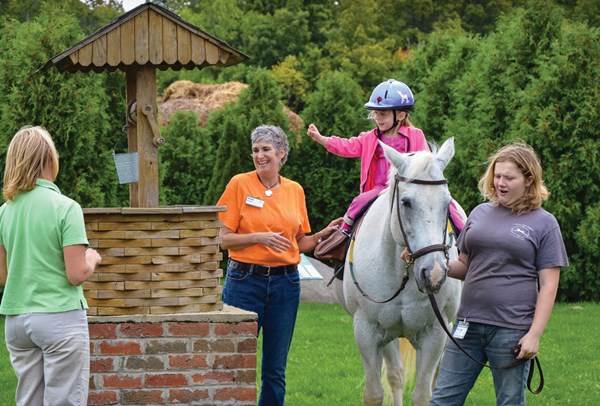
Can horses help children with autism? Some popular accounts have described remarkable, almost miraculous effects, but there hasn’t been much research. Now a new study—a four-year randomized, controlled trial involving a substantial number of children with autism—provides solid evidence that therapeutic riding can provide specific benefits.
Autism affects roughly one of every 68 American children, the U.S. Centers for Disease Control and Prevention says, and the number is growing. The term “autism spectrum disorder” best captures the complex nature of this condition, which is actually a group of disorders involving brain development. Characteristics include repetitive behaviors and difficulty communicating and interacting with others, but no two cases are the same. The effects range from mild impairment to severe disability.
“There is no one right treatment for all children with autism, which complicates research to better understand which treatments are effective and why,” says Robin Gabriels, PsyD, the study’s principal investigator. Dr. Gabriels is an associate professor at the University of Colorado Denver and program director of a specialized unit for children with developmental disabilities at Children’s Hospital Colorado in Aurora. From 2007 to 2009, in partnership with the Colorado Therapeutic Riding Center, she directed a pilot study of the effects of therapeutic horseback riding with about 40 children with ASD. The results were promising and helped land a grant from the National Institute of Nursing Research (National Institutes of Health) and Mars-Waltham Corporation for the larger trial, also carried out at CTRC.
The children in the study, ages 6 to 16, all had a confirmed diagnosis of ASD and met other criteria set by the researchers. They were randomly assigned to one of two activities—therapeutic riding or barn activity, in which children learned about horsemanship but had no contact with horses. Both activities were taught in small groups of two to four children, with at least one volunteer per child, for 10 weekly one-hour sessions.
Instructors used visual aids and other teaching methods that target the way ASD kids learn. Because even certified therapeutic-riding instructors are often not specifically trained to teach these children, Dr. Gabriels developed a manual. Over four years, 127 children enrolled in the study and 100 completed the 10-week program. The researchers used a battery of assessment measures to chart progress.
“I was skeptical going in because there was limited research about therapeutic riding, but the children in the riding program showed significant improvements in hyperactivity, irritability, social cognition and communication, as opposed to the barn-activity group,” Dr. Gabriels said. “We also completed a six-month follow-up and found that children in the riding group maintained the gains they made in irritability, language and social communication with no further riding.” This suggests that children may not need to stay in a program for an extended period, but after an initial 10 weeks, they may benefit from four or five booster lessons, she says.
Riding produced no miracles, but some component of human–equine interaction seems to help the children. Dr. Gabriels points to several possibilities.
Shared attention: Riding involves intuitive teamwork and social interaction—the horse responds to the rider’s body language and the rider responds to the horse’s movement. “The effects are likely enhanced by the horse’s size and the demands of maintaining bilateral control and balance,” she says.
Relaxation: The rhythmic movement and warmth of the horse’s body may reduce stress. To find out, Dr. Gabriels recently completed a pilot study.
“This study followed the design of the previous studies, but we also assessed stress by measuring levels of the hormone cortisol in saliva samples taken before and 20 minutes after the ride or barn activity,” she says. Results of that testing will be out soon. In other measures, the outcomes were the same as in the earlier research even though the instructors and setting were different.
“Families who are dealing with ASD are always looking for effective treatments,” she notes. “Riding is fun and it’s available in rural areas where people often have trouble getting services.” Her research provides the sort of evidence that insurance companies want to see before they’ll cover a therapy, and that’s no small matter for these families.
This article originally appeared in the December 2015 issue of Practical Horseman.











